#gustav kuhn
Text


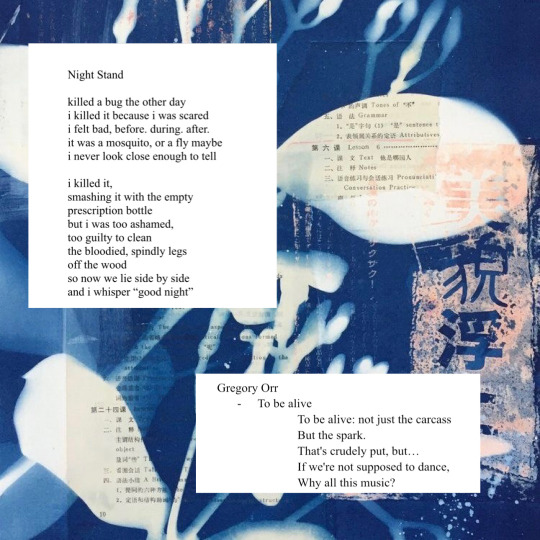
in honor of colder weather
#web weaving#poetry#angelina weld grimke#clementine von radics#madisen kuhn#gustav klimt#klimt#gregory orr#original poetry#new poets club
43 notes
·
View notes
Text

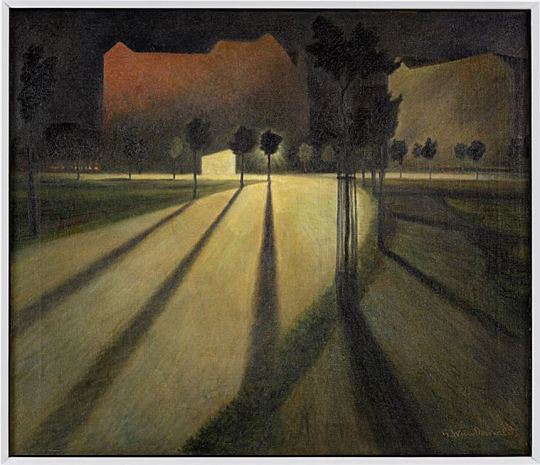
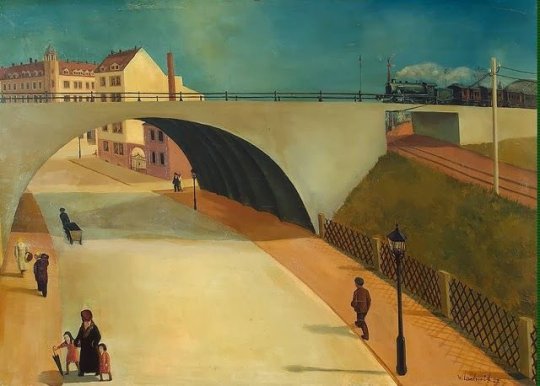
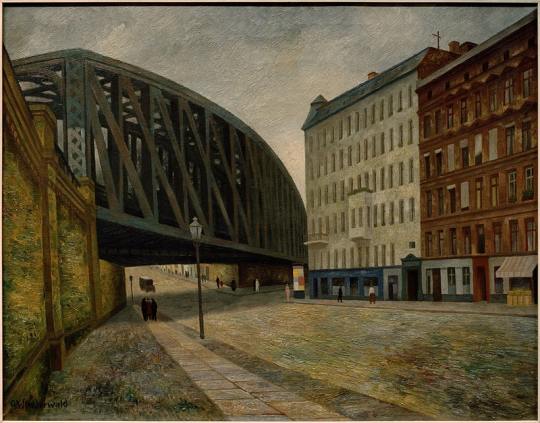
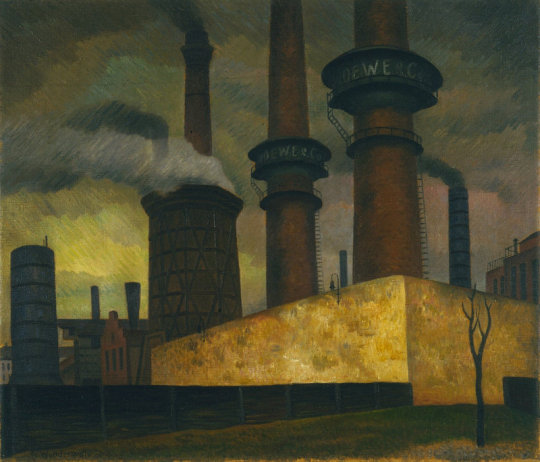

Gustav Wunderwald’s Paintings of Weimar Berlin.
The landscape painter Gustav Wunderwald (1882 - 1945) died from water poisoning in a hospital in the western suburb of Charlottenburg, Berlin. He was sixty-three years old.
Born in Kalk, an industrial suburb on the outskirts of Cologne, Wunderwald experienced first-hand the modern, industrialised city from a young age. Showing early signs of a proficiency in painting, he undertook a two-year apprenticeship under the guidance of the painter Wilhelm Kuhn. Wunderwald quickly found his niche in theatrical and stage set design, taking a job as a scenery painter in Gotha in 1899. For the next thirteen years, his skills led him through a succession of jobs in a variety of cities. After a year in Gotha, he spent four years in Berlin (1900–1904) working at the studio of Georg Hartig and Company, where he specialised in theatrical set painting. From Berlin, Wunderwald moved to Stockholm, and then onwards to Düsseldorf, Innsbruck, and Freiberg over the course of the next eight years, before moving back to Berlin in 1912 to work as a stage designer at the German Opera House.
Wunderwald’s paintings of Berlin’s working-class neighbourhoods have an enigmatic quality about them. They employ a sooty palette of warm browns and greys, and have a stillness and architectural solidity to them that can perhaps be accounted for by the artist’s prior experience as a painter of theatrical scenery. One could well image scenes such as Fabrik von Loewe & Co. or Brücke über die Ackerstraße as backdrops to theatrical adaptations of Weimar-era novels like Alfred Döblin’s Berliner Alexanderplatz, Hans Fallada’s Little Man What Now?, or Christopher Isherwood’s Goodbye to Berlin.
Amidst the tenement blocks, factories, smokestacks, and advertising hoardings, Wunderwald found no shortage of subjects to paint. In a letter to a friend, written in the winter of 1926, he wrote: “Sometimes I stagger back as if drunk from my wandering through Berlin; there are so many impressions that I have no idea which way to go.”3 Wunderwald, describing his search for inspiring scenes to paint on the streets of the city, was not the first and by no means the last individual to find themselves overwhelmed by the sights and sounds of Berlin. His description of feeling drunk through sensory overload brings to mind fellow Berliner and sociologist Georg Simmel’s description of the “intensification of nervous stimulation” that the modern city-dweller encountered on the streets of the metropolis.4 Most urban inhabitants, argued Simmel, adopted a blasé attitude in order to protect themselves from the excess of sights, sounds, and movement encountered in the urban public sphere. By contrast, some individuals — like Wunderwald — consciously chose to immerse themselves in the tumult of the big city, wandering around its streets in a state of rapture, just as Baudelaire had done in Paris half a century earlier.
From an interesting article by Mark Hobbs https://publicdomainreview.org/.../gustav-wunderwalds.../
41 notes
·
View notes
Text
youtube
Wilhelm Kienzl (1857–1941) - Don Quixote, Op. 50, Act III Scene 5: Amor, denke ich der Pein
Choir: Berlin Radio Choir
Orchestra: Rundfunk-Sinfonieorchester Berlin, Conductor: Gustav Kuhn
3 notes
·
View notes
Note
The letter J ;)
My lovely J! Thank you so much for the ask 😄💙
For the letter J, we have:
"Je sers" - Barbara Pravi
"Jolene" - Dolly Parton
"Just Around the Riverbend (from Pocahontas)" - Judy Kuhn
"Jupiter - The Bringer of Jollity" - Gustav Holst
"Just A Girl" - No Doubt
2 notes
·
View notes
Video
https://notizieoggi2023.blogspot.com/2024/03/gustav-wunderwald-der-heerstrae-1918.html Gustav Wunderwald - An der Heerstraße (1918) Gustav Wunderwald, un pittore tedesco associato allo stile del “Nuovo oggettivismo”, creò il dipinto “An der Heerstraße” nel 1918. Quest’opera cattura una scena di strada notturna con un affascinante gioco di luci e ombre. L’illuminazione teatrale aggiunge un fascino unico alla composizione. Il percorso artistico di Wunderwald iniziò a Colonia, dove fu apprendista del maestro pittore Wilhelm Kuhn. Nel corso degli anni, lavorò come scenografo, creando scenografie per vari teatri. La sua carriera lo portò da Berlino a Stoccolma, e trascorse persino del tempo “nella natura” come esperimento. Tuttavia, alla fine tornò all’impiego convenzionale. Negli ultimi anni, Wunderwald si concentrò sulla pittura di paesaggi industriali, quartieri di Berlino e soggetti rurali. Le sue opere raffiguravano ponti, stazioni ferroviarie e case popolari, catturando l’essenza della vita urbana. Nonostante le sfide affrontate durante la Prima Guerra Mondiale e il regime nazionalsocialista che etichettò la sua arte come “degenerata”, Wunderwald lasciò un’eredità duratura attraverso le sue evocative tele. !An der Heerstraße Sommario: “An der Heerstraße” di Gustav Wunderwald offre uno sguardo affascinante su una strada notturna, giocando abilmente con luci e ombre.
1 note
·
View note
Video
vimeo
Magic Mud from Snorre Ruhe on Vimeo.
Roskilde rock and pop museum "Ragnarock" has made an exhibition (Smattens Magi) that commemorates 50 years of Roskilde Festival. The exhibition focuses on the festival guest and the life at campsite through the years. This film is a tribute to that life and will hopefully spark the viewers interest and appetency to visit the exhibition and dive further into the life of the festival guest.
After two years of pandemic cancelations of Roskilde festival, we wanted the film to be a tribute to the camp life, since that is the ongoing pulse of the festival and the essens for many Roskilde Festival guest.
All scenes are based on real life, from own experiences and stories we have gathered through talking with different camps, who have attended the festival for more than 10-20 years, and therefor have seen it all.
Starring - Andreas Dissing Hyttel
Director & Writer - Snorre Fuglsang Ruhe
Producer - Jens Formann
Exec. Producer - Ege Heckmann
Line Producer - Annika Lund Jensen
Assistant Director - Laura Hancock
Director of Photography - Jonas Møller
Set design - Susse Riber
Stylist - Sascha Valbjørn
Sound design - Sune Kaarsberg
Props Master - Mathilde Juul Ipsen
Props ass - Marie Boye
Makeup artists - Laura Gasbjerg
Production assistant - Laura Ursø
1st AC - Sebastian Sandnes, Mark Lauritsen
Gaffer - Simon Jeppesen
Spark - William Winther
Grip - Nicolaj Bak
Steadi - Kim Jensen
Sound Recordist - Karsten Dines Johansen
VFX by HITCH
CGI artist - Simon Dunkan
Colorist / Cameo Film - Nurali Kushkov
Post coordinator - Emma Engberg
VFX artist - Jonathan Wendt
VFX artist - Fredrik Lindgren
Graphic designer - Svlstg
Cast:
Martin Laurits
Leonora Saabye
Nana Nancy Grouleff
Helene Stauersbøl Eldov
Oscar Amandus Rodsgaard
Sine vangsgaard Olesen
Sofus Dreyer
Sofus Sean Bassett
Esben Wormsle
Aske Fuglsang Ruhe
Party People:
Terkel Walther Dons Christensen
Frederik Bang
Sara m. s.
Sara Månepige
Sara Dhimitri
Fie Giese Kuhn
Michael the Wrestler
Line Fie Juul Dalsgaard
Malou børjesson
Talia Bro
Katrina Christensen
Willian Winther
Træls ny kæreste:
Kristian Sejerskilde
BTS - Gustav Feldorf
Camera equipment - Only Rental
Lenses - Sidney Plaut
Lighting equipment - Filmgear
Grip equipment - Trust Rental
Prop rental - Wonderland Productions
Catering - Frederikke Maydahl
A special thanks to:
The Minds Of 99
Kasper winding
Farveblind
Specktors x Nonsens
Benny Ruhe
Bjarkes bryllup
Kasper Notlev
Anders Jon
MAAN Rental
Nabil Nafar
Camp: Burt Reynolds
Camp: Baguette
Camp: Find Holger
Camp Cuddle
Camp skinkeskolen
Peter Thornton
Bue Hugo Tidemann
Morten Lerstrup & Lars Moos
Anders Hegner
Mikkel Linden & Sofie Carmel
0 notes
Video
vimeo
Magic Mud from Snorre Ruhe on Vimeo.
Roskilde rock and pop museum "Ragnarock" has made an exhibition (Smattens Magi) that commemorates 50 years of Roskilde Festival. The exhibition focuses on the festival guest and the life at campsite through the years. This film is a tribute to that life and will hopefully spark the viewers interest and appetency to visit the exhibition and dive further into the life of the festival guest.
After two years of pandemic cancelations of Roskilde festival, we wanted the film to be a tribute to the camp life, since that is the ongoing pulse of the festival and the essens for many Roskilde Festival guest.
All scenes are based on real life, from own experiences and stories we have gathered through talking with different camps, who have attended the festival for more than 10-20 years, and therefor have seen it all.
Starring - Andreas Dissing Hyttel
Director & Writer - Snorre Fuglsang Ruhe
Producer - Jens Formann
Exec. Producer - Ege Heckmann
Line Producer - Annika Lund Jensen
Assistant Director - Laura Hancock
Director of Photography - Jonas Møller
Set design - Susse Riber
Stylist - Sascha Valbjørn
Sound design - Sune Kaarsberg
Props Master - Mathilde Juul Ipsen
Props ass - Marie Boye
Makeup artists - Laura Gasbjerg
Production assistant - Laura Ursø
1st AC - Sebastian Sandnes, Mark Lauritsen
Gaffer - Simon Jeppesen
Spark - William Winther
Grip - Nicolaj Bak
Steadi - Kim Jensen
Sound Recordist - Karsten Dines Johansen
VFX by HITCH
CGI artist - Simon Dunkan
Colorist / Cameo Film - Nurali Kushkov
Post coordinator - Emma Engberg
VFX artist - Jonathan Wendt
VFX artist - Fredrik Lindgren
Graphic designer - Svlstg
Cast:
Martin Laurits
Leonora Saabye
Nana Nancy Grouleff
Helene Stauersbøl Eldov
Oscar Amandus Rodsgaard
Sine vangsgaard Olesen
Sofus Dreyer
Sofus Sean Bassett
Esben Wormsle
Aske Fuglsang Ruhe
Party People:
Terkel Walther Dons Christensen
Frederik Bang
Sara m. s.
Sara Månepige
Sara Dhimitri
Fie Giese Kuhn
Michael the Wrestler
Line Fie Juul Dalsgaard
Malou børjesson
Talia Bro
Katrina Christensen
Willian Winther
Træls ny kæreste:
Kristian Sejerskilde
BTS - Gustav Feldorf
Camera equipment - Only Rental
Lenses - Sidney Plaut
Lighting equipment - Filmgear
Grip equipment - Trust Rental
Prop rental - Wonderland Productions
Catering - Frederikke Maydahl
A special thanks to:
The Minds Of 99
Kasper winding
Farveblind
Specktors x Nonsens
Benny Ruhe
Bjarkes bryllup
Kasper Notlev
Anders Jon
MAAN Rental
Nabil Nafar
Camp: Burt Reynolds
Camp: Baguette
Camp: Find Holger
Camp Cuddle
Camp skinkeskolen
Peter Thornton
Bue Hugo Tidemann
Morten Lerstrup & Lars Moos
Anders Hegner
Mikkel Linden & Sofie Carmel
0 notes
Video
vimeo
Roskilde rock and pop museum "Ragnarock" has made an exhibition (Smattens Magi) that commemorates 50 years of Roskilde Festival. The exhibition focuses on the festival guest and the life at campsite through the years. This film is a tribute to that life and will hopefully spark the viewers interest and appetency to visit the exhibition and dive further into the life of the festival guest. After two years of pandemic cancelations of Roskilde festival, we wanted the film to be a tribute to the camp life, since that is the ongoing pulse of the festival and the essens for many Roskilde Festival guest. All scenes are based on real life, from own experiences and stories we have gathered through talking with different camps, who have attended the festival for more than 10-20 years, and therefor have seen it all. Starring - Andreas Dissing Hyttel Director & Writer - Snorre Fuglsang Ruhe Producer - Jens Formann Exec. Producer - Ege Heckmann Line Producer - Annika Lund Jensen Assistant Director - Laura Hancock Director of Photography - Jonas Møller Set design - Susse Riber Stylist - Sascha Valbjørn Sound design - Sune Kaarsberg Props Master - Mathilde Juul Ipsen Props ass - Marie Boye Makeup artists - Laura Gasbjerg Production assistant - Laura Ursø 1st AC - Sebastian Sandnes, Mark Lauritsen Gaffer - Simon Jeppesen Spark - William Winther Grip - Nicolaj Bak Steadi - Kim Jensen Sound Recordist - Karsten Dines Johansen VFX by HITCH CGI artist - Simon Dunkan Colorist / Cameo Film - Nurali Kushkov Post coordinator - Emma Engberg VFX artist - Jonathan Wendt VFX artist - Fredrik Lindgren Graphic designer - Svlstg Cast: Martin Laurits Leonora Saabye Nana Nancy Grouleff Helene Stauersbøl Eldov Oscar Amandus Rodsgaard Sine vangsgaard Olesen Sofus Dreyer Sofus Sean Bassett Esben Wormsle Aske Fuglsang Ruhe Party People: Terkel Walther Dons Christensen Frederik Bang Sara m. s. Sara Månepige Sara Dhimitri Fie Giese Kuhn Michael the Wrestler Line Fie Juul Dalsgaard Malou børjesson Talia Bro Katrina Christensen Willian Winther Træls ny kæreste: Kristian Sejerskilde BTS - Gustav Feldorf Camera equipment - Only Rental Lenses - Sidney Plaut Lighting equipment - Filmgear Grip equipment - Trust Rental Prop rental - Wonderland Productions Catering - Frederikke Maydahl A special thanks to: The Minds Of 99 Kasper winding Farveblind Specktors x Nonsens Benny Ruhe Bjarkes bryllup Kasper Notlev Anders Jon MAAN Rental Nabil Nafar Camp: Burt Reynolds Camp: Baguette Camp: Find Holger Camp Cuddle Camp skinkeskolen Peter Thornton Bue Hugo Tidemann Morten Lerstrup & Lars Moos Anders Hegner Mikkel Linden & Sofie Carmel
0 notes
Photo

Taxonomies of misdirection overview
When confronted with a magic trick, you first perceive the relevant sensory information, then store key aspects of it in your memory, and then perhaps use this to reason about how the trick was done. A magician can prevent a spectator from discovering the method by simply manipulating any one of these processes.
These categories define misdirection in terms of the psychological mechanisms affected. The first set of principles manipulate your perception, preventing you from perceiving selected parts of the performance.
—Gustav Kuhn, Experiencing the Impossible
12 notes
·
View notes
Photo

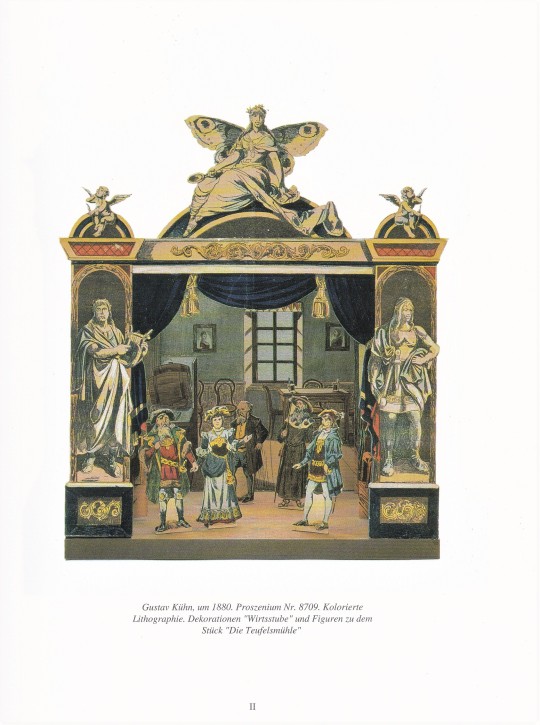







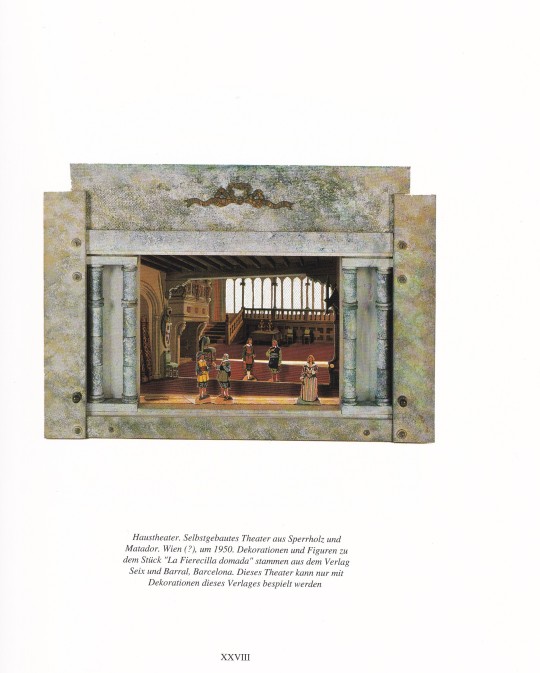
Papiertheater
Die Sammlung Anna Feja Seitler und Heino Seitler
Bearbeitet und herausgegeben von Norbert Donhofer
Franz Deuticke Verlag, Wien 1992, 219 S. mit 100 farbigen Tafeln, ISBN 9783700546382
euro 120,00
email if you want to buy [email protected]
Wohl einer der umfangreichsten Kataloge über Papiertheater, Dekorationen, Figuren etc. aus Österreich (beginnend bei Trentsensky, Carl Fritz, Johan Neidl, Gustav Lewy u.a.), Deutschland (Gustav Kühn, Oehmigke und Riemschneider, Joseph Scholz, J.F. Schreiber), sowie Beispiele aus Dänemark, England, Frankreich u.a.
Dal Settecento in poi i teatrini hanno rappresentato “uno sguardo nella meraviglia”, una porta aperta sul fantastico, una sorta di Paese delle meraviglie dove si perde la dimensione del reale.Predecessori dei teatrini di carta furono i diorami, che mostravano un’immagine immobile, tridimensionale e prospettica di un determinato spazio; ricordiamo tra i più interessanti i prospetti e i diorami di Martin Engelbrecht, creati in Germania attorno al 1760.Nello stesso periodo, in Europa iniziò la pubblicazione di stampe dedicate al teatro, prodotte a partire da un’incisione su rame e a volte colorate a mano: stampe che ritraevano attori in costume e in pose caratteristiche di un determinato evento teatrale.Dalla sintesi del diorama e delle figurine in atteggiamenti e costumi di scena si svilupperà il teatro di carta. A partire dalla seconda metà dell’Ottocento si diffonde in Europa la produzione di teatrini e marionette stampati su fogli di carta poi incollati su cartone o legno, intagliati e assemblati.
06/05/20
orders to: [email protected]
ordini a: [email protected]
twitter:@fashionbooksmi
instagram: fashionbooksmilano, designbooksmilano tumblr: fashionbooksmilano, designbooksmilano
#papiertheater#paper theatre#teatri di carta#Joseph Scholz#J.F.Schreiber#Gustav Kuhn#Carl Fritz#Jophan Neidk#Gustav Lewy#collezionismo#fashionbooksmilano
6 notes
·
View notes
Photo
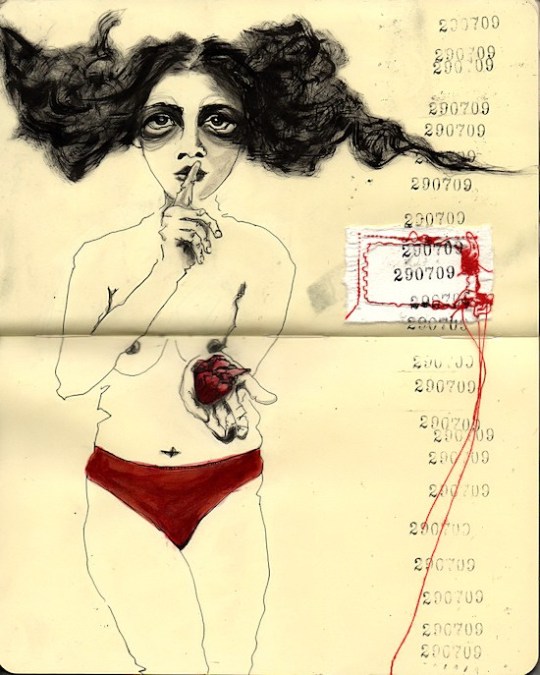
«Un corazón es una riqueza que no se vende ni se compra, pero que se regala». ― Gustave Flaubert
Imagen: Erika Kuhn
2 notes
·
View notes
Photo


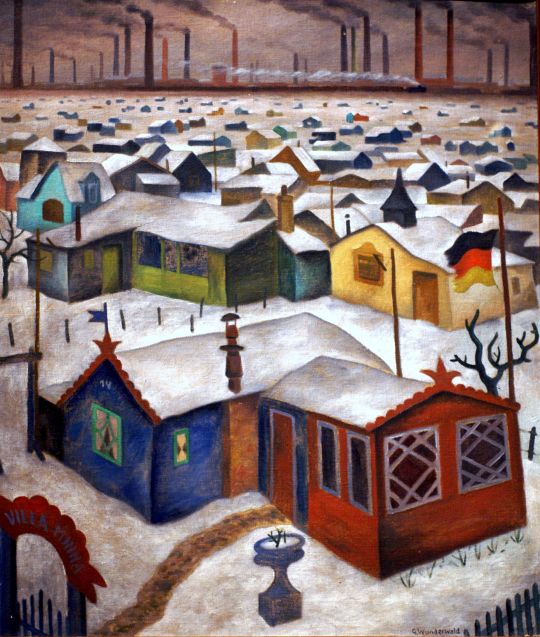
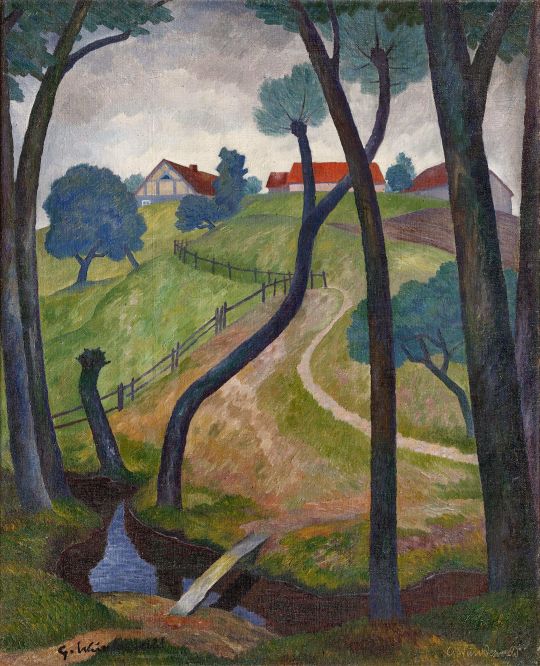
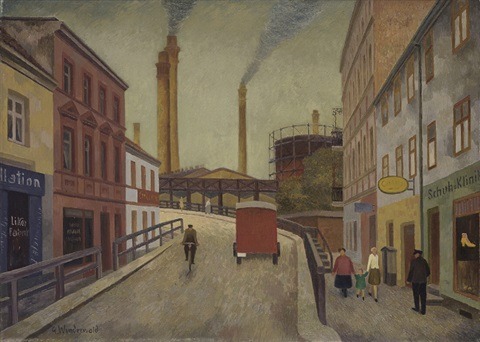



Gustav Wunderwald (1882 – 1945) was a German painter of the New Objectivity style, and a theatrical set designer.
The son of the gunsmith Karl Wunderwald, Gustav Wunderwald was born in Kalk, Cologne in 1882. Beginning his artistic career in 1896, he became an apprentice of the Cologne master painter Wilhelm Kuhn, then he became a scenery painter under Professor Max Bruckner, and from 1900 to 1904 he worked at G. Hartwig's studio for stage painting in Charlottenburg.
From 1904 to 1907 he worked as a set designer at the Royal Opera in Stockholm. Then he joined the Drama and Music Executive Board of the Theatre in Düsseldorf under Louise Dumont and Gustav Lindemann.
It was here that he also had the first exhibition of his art, and he met his longtime friend, the Rhenish writer and playwright Wilhelm Schmidtbonn (1876–1952). In May 1908 he married Amalie Minna Gerull (1881–1941). With her and the Schmidtbonns he spent the years 1908 to 1909 in Tegernsee.
https://en.wikipedia.org/wiki/Gustav_Wunderwald
10 notes
·
View notes
Link
O canal de TV “Film & Arts” está disponível nestas operadoras:
- Claro TV: Canal 148; Canal 648 (HD)
- SKY: Canal 116; Canal 516 (HD)
- NET: Canal 148; Canal 648 (HD)
Clique no item abaixo para ver as datas/horários em janeiro/2021.
1. Filarmônica de Los Angeles Gala 100 Aniversário
2. Concerto de Paris 2020
3. YO-YO MA interpreta as suítes de Bach
4. Tristan E Isolda Salue Por Moi Le Monde
5. Aida - Anna Netrebko Salzburg Festival
6. Presença De Villa Lobos - A Serie
7. Tosca- Piotr Beczala- Carlos Alvarez
8. Beethoven At Teamlab Tokyo
9. Dmitry Shostakovich: A Man Of Many Faces
10. Il Trovatore (Baremboim/netrebko/domingo)
11. Mariinsky: Piotr Tchaikovsky: The Nutcracker (2012)
12. Gianni Schicchi
13. Villa-Lobos: From Bach To Brazil
14. Ermione 2018 Gustav Kuhn
4 notes
·
View notes
Text
#1yrago Happy Public Domain day: for real, for the first time in 20 years!

Every year, Jennifer Jenkins and Jamie Boyle from the Duke Center for the Public Domain compile a "Public Domain Day" list (previously) that highlights the works that are not entering the public domain in America, thanks to the 1998 Sonny Bono Copyright Term Extension Act, which hit the pause button on Americans' ability to freely use their artistic treasures for two decades -- a list that also included the notable works entering the public domain in more sensible countries of the Anglophere, like Canada and the UK, where copyright "only" lasted for 50 years after the author's death.
But this year, it's different.
This is the year that America unpauses its public domain; it's also the year that Canadian PM Justin Trudeau capitulated to Donald Trump and retroactively extended copyright on works in Canada for an extra 20 years, ripping works out of Canada's public domain, making new works based on them into illegal art (more proof that good hair and good pecs don't qualify you to be a good leader -- see also: V. Putin -- not even when paired with high-flying, cheap rhetoric).
Even as Canada's public domain has radically contracted, America's has, for the first, time, opened.
So this year's American Public Domain Day List is, for the first time in 20 years, not a work melancholy alternate history, but rather a celebration of works that Americans are newly given access to without restriction or payment, for free re-use and adaptation, in the spirit of such classics as Snow White, West Side Story, My Fair Lady, All You Need is Love, and more (More than 1,000 in all, summarized in this handy spreadsheet -- thanks Gary!).
Films
* Safety Last!, directed by Fred C. Newmeyer and Sam Taylor, featuring Harold Lloyd
* The Ten Commandments, directed by Cecil B. DeMille
* The Pilgrim, directed by Charlie Chaplin
* Our Hospitality, directed by Buster Keaton and John G. Blystone
* The Covered Wagon, directed by James Cruze
* Scaramouche, directed by Rex Ingram
Books
* Edgar Rice Burroughs, Tarzan and the Golden Lion
* Agatha Christie, The Murder on the Links
* Winston S. Churchill, The World Crisis
* e.e. cummings, Tulips and Chimneys
* Robert Frost, New Hampshire
* Kahlil Gibran, The Prophet
* Aldous Huxley, Antic Hay
* D.H. Lawrence, Kangaroo
* Bertrand and Dora Russell, The Prospects of Industrial Civilization
* Carl Sandberg, Rootabaga Pigeons
* Edith Wharton, A Son at the Front
* P.G. Wodehouse, works including The Inimitable Jeeves and Leave it to Psmith
* Viginia Woolf, Jacob's Room
Music
* Yes! We Have No Bananas, w.&m. Frank Silver & Irving Cohn
* Charleston, w.&m. Cecil Mack & James P. Johnson
* London Calling! (musical), by Noel Coward
* Who’s Sorry Now, w. Bert Kalmar & Harry Ruby, m. Ted Snyder
* Songs by “Jelly Roll” Morton including Grandpa’s Spells, The Pearls, and Wolverine Blues (w. Benjamin F. Spikes & John C. Spikes; m. Ferd “Jelly Roll” Morton)
* Works by Bela Bartok including the Violin Sonata No. 1 and the Violin Sonata No. 2
* Tin Roof Blues, m. Leon Roppolo, Paul Mares, George Brunies, Mel Stitzel, & Benny Pollack (There were also compositions from 1923 by other well-known artists including Louis Armstrong, Irving Berlin, George Gershwin, WC Handy, Oscar Hammerstein, Gustav Holst, Al Jolson, Jerome Kern, and John Phillip Sousa; though their most famous works were from other years.)
And as great as that list is, it's hardly a patch on the amazing works we'd be inheriting if the Sonny Bono law hadn't been passed and the 1978 law was still on the books -- works whose authors fully expected them to be in the public domain as of tomorrow:
Books
* Madeleine L’Engle, A Wrinkle in Time
* Rachel Carson, Silent Spring
* Barbara Tuchman, The Guns of August
* Katherine Anne Porter, Ship of Fools
* James Baldwin, Another Country
* Philip K. Dick, The Man in the High Castle
* Thomas Kuhn, The Structure of Scientific Revolutions
* Vladimir Nabokov, Pale Fire
* Anthony Burgess, A Clockwork Orange
* Michael Harrington, The Other America
* Milton Friedman, Capitalism and Freedom
* J.G. Ballard, The Drowned World
* Ray Bradbury, Something Wicked This Way Comes
* Ken Kesey, One Flew Over the Cuckoo’s Nest
* Edward Albee, Who’s Afraid of Virginia Woolf?
* Aleksandr Solzhenitsyn, One Day in the Life of Ivan Denisovich
* Doris Lessing, The Golden Notebook
* Helen Gurley Brown, Sex and the Single Girl
* Ingri d’Aulaire and Edgar Parin d’Aulaire, D’Aulaires’ Book of Greek Myths
Movies
* Lawrence of Arabia
* The Longest Day
* The Manchurian Candidate
* Dr. No
* Jules and Jim
* Sanjuro
* Birdman of Alcatraz
* Mutiny on the Bounty
* Days of Wine and Roses
* How the West Was Won
Music
* Dream Baby (How Long Must I Dream), by Cindy Walker, performed by Roy Orbison
* Blowin’ in the Wind, Bob Dylan
* Watermelon Man, Herbie Hancock (from his first album, Takin’ Off)
* Twistin’ the Night Away, Sam Cooke
* You Can’t Judge a Book by the Cover and You Shook Me, Willie Dixon
* Surfin’ Safari, The Beach Boys
* Songs from A Funny Thing Happened on the Way to the Forum, Stephen Sondheim
* Dream Baby (How Long Must I Dream), Cindy Walker
* Big Girls Don’t Cry, Bob Crewe and Bob Gaudio
* Breaking Up Is Hard To Do, Neil Sedaka and Howard Greenfield
* Little Boxes, Malvina Reynolds
* The Loco-Motion, Gerry Goffin and Carole King
* Soldier Boy, Luther Dixon and Florence Greenberg
And, as Jenkins and Boyle point out, the largely hidden casualty of copyright term extension is the scholarship and research published in academic journals, who paid nothing for these works, and who have locked them up for decades to come:
https://boingboing.net/2018/12/31/thanks-justin.html
13 notes
·
View notes
Quote
Much of our work on misdirection reveals that the gaps in our conscious experience are bigger than most of us had assumed. As you look at your surroundings, you experience the world as a rich and complete sensory experience. However, our research on misdirection illustrates that this conscious experience is a powerful illusion. Our true perception is full of gaps and holes, and much more removed from reality than most of us imagine.
Gustav Kuhn, psychologist, magician and director of MAGIC
#magic#reality#cognition#human biology#misdirection#til#so this guy studies the effect of magic on our brains#talk about goals
43 notes
·
View notes
Photo

@mitpress up to new tricks ... ➡️ #Repost @mitpress ・・・ What do we see when we watch a magician pull a rabbit out of a hat or read a person's mind? We are captivated by an illusion; we applaud the fact that we have been fooled. Why do we enjoy experiencing what seems clearly impossible, or at least beyond our powers of explanation? In "Experiencing the Impossible: The Science of Magic," Gustav Kuhn examines the psychological processes that underpin our experience of magic. Kuhn, a psychologist and a magician, reveals the intriguing—and often unsettling—insights into the human mind that the scientific study of magic provides. Magic, Kuhn explains, creates a cognitive conflict between what we believe to be true (for example, a rabbit could not be in that hat) and what we experience (a rabbit has just come out of that hat!). Drawing on the latest psychological, neurological, and philosophical research, he suggests that misdirection is at the heart of all magic tricks. #magic #science #magicacts #magicians #gustavkuhn #experiencingtheimpossible #scienceofmagic #magician #magicbooks #newbooks #ReadUP https://www.instagram.com/p/Bwhqvh0gi-L/?utm_source=ig_tumblr_share&igshid=51s10o68n9dh
#repost#magic#science#magicacts#magicians#gustavkuhn#experiencingtheimpossible#scienceofmagic#magician#magicbooks#newbooks#readup
1 note
·
View note